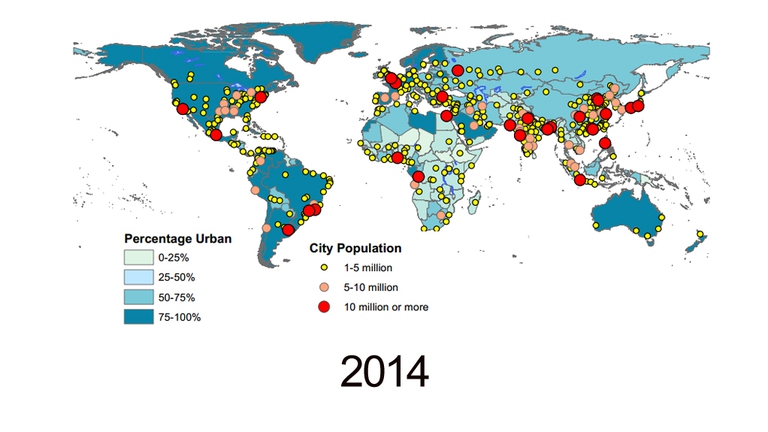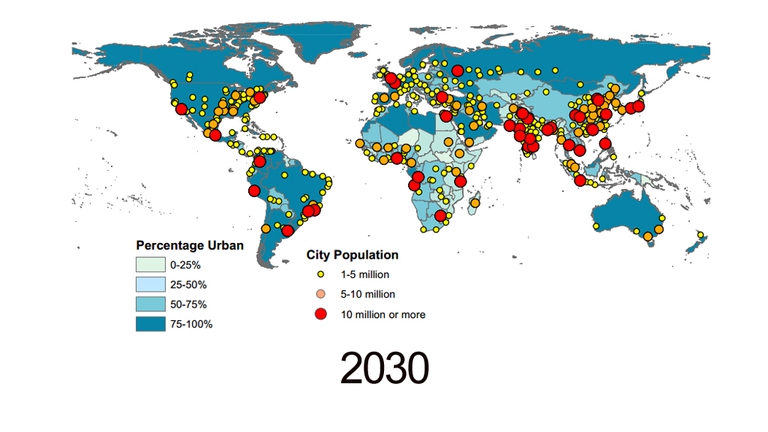Today, half of the world’s population live in rapidly expanding cities: often in a megalopolis with dozens of millions inhabitants, such as Tokyo, Shanghai and Mexico City. Impressive figures that are on the rise, as the number of people living in metropolises will increase further at the expense of rural areas. According the latest World Urbanization
Today, half of the world’s population live in rapidly expanding cities: often in a megalopolis with dozens of millions inhabitants, such as Tokyo, Shanghai and Mexico City. Impressive figures that are on the rise, as the number of people living in metropolises will increase further at the expense of rural areas. According the latest World Urbanization Prospects, the report on urbanisation drafted by the United Nations Department of Economic and Social Affairs (UN DESA), over 6 billion people will live in cities in 2045.
![2014]()
![2030]()
The sharp increase in urban populations will be related to two factors: on the one hand, the world population will increase from 6 to 9 billion inhabitants by 2050; on the other, people will be evermore desirous to move to cities in search of a wealthier and safer lifestyle, where more services are provided. The combination of these two factors will increase the number of people living in cities, who will be 2.5 billion more than today within the next 30 years. The highest increase will occur in countries such as India, China and Nigeria, which will concentrate 37% of overall urban population growth. In India alone, for instance, the number of people living in cities will increase by over 400 million.
Due to this growth, the administration of these “city-states” will face several challenges, such as granting access to education, healthcare, energy, transports and healthy food produced sustainably. “What we need to worry most about in this situation is the fact that governments don’t adopt the right measures to tackle the current growth” said John Wilmoth, Director of the Population Division of UN DESA. “Managing urban areas has become one of the most important challenges of the 21st century.”
During the 1990s there were only 10 megalopolises in the world. Today there are 28, of which 16 in Asia, 4 in South America, 3 in Africa, 3 in Europe and 2 in North America. According to the latest Demographia survey, Tokyo, Japan’s capital, is the largest city with almost 38 million inhabitants, followed by Jakarta, in Indonesia, with almost 30 million inhabitants and New Delhi, in India, with 24 million inhabitants.
[vimeo url=”http://vimeo.com/63635193″]
Rural areas will face the opposite trend. Today, there are 3.4 billion people living in the countryside, while in 2050 rural populations will not exceed 3 billion people, mostly concentrated (90% of them) in Asia and in Africa.
Siamo anche su WhatsApp.
Segui il canale ufficiale LifeGate per restare aggiornata, aggiornato sulle ultime notizie e sulle nostre attività.

Quest'opera è distribuita con Licenza Creative Commons Attribuzione - Non commerciale - Non opere derivate 4.0 Internazionale.










